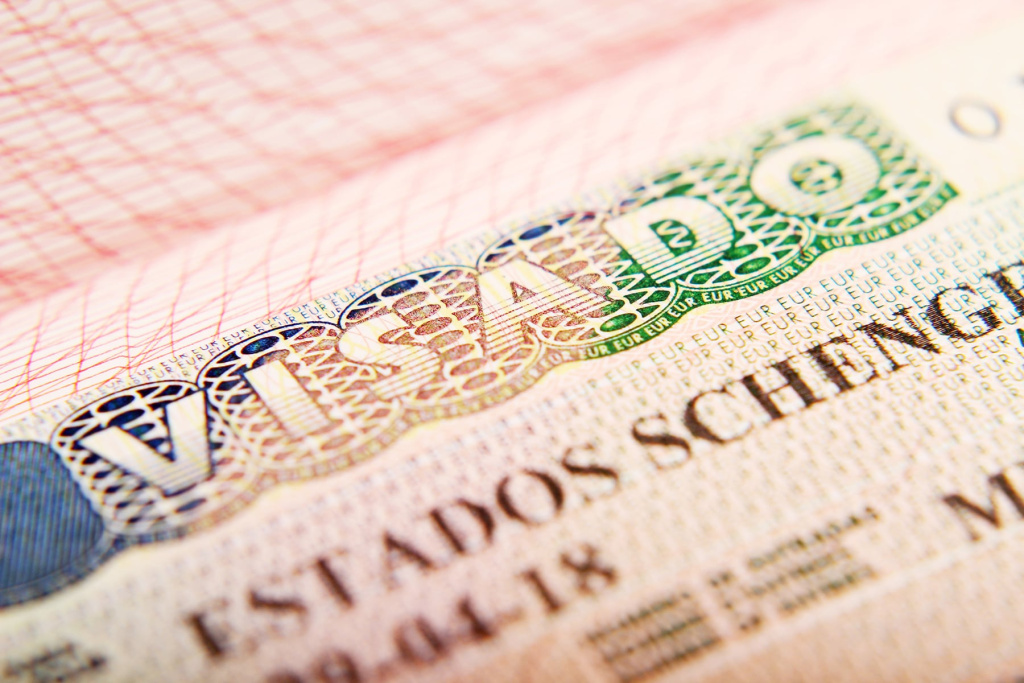Visa or Visado: Is there a difference between the Spanish of Spain and that of Latin American countries?
Spanish is the language with the second most native speakers in the world (according to data from Ethnologue), with more native speakers than English has.
Have you ever thought about whether there is a difference between the way Pedro from Madrid speaks and writes and the way another Pedro converses 10,000 kilometers away in Buenos Aires? We have the answer: there is indeed, a considerable one. How did this come to be?
A great many factors impact the development of any language and its evolution. The conquistadors that arrived in the New World in search of wealth and glory hailed from different regions of Spain. In spreading the Spanish language, they first tried to give Spanish names to the rituals and belongings of local Indians as well plants and everyday objects they had never before encountered. What ended up happening, however, was the reverse. They began borrowing the words for these things from the local Indian languages (Guarani, Nautal, Quechua, Mapudungun, Aymara, among others) and adapt them to Spanish pronunciation. Several examples from among the huge number of words they borrowed include:
- Chicle / gum: tzictli in Nautal, chewing resin;
- Tiza / chalk: tizatl in Nautal, white Earth;
- Tomate / tomato: tomatl in Nautal, thick water;
- Cancha / field, square: kancha in Quechua, a protected site;
- Carpa / pavilion, tent: karpa in the Quechua, a large canopy;
- Pampa / pampa: pampa in the Quechua, flat Earth;
- Hamaca / hammock: hamaka in the Taino language, a fish catching net;
- Maíz / maize, corn: mahís in the Taino language, a source of life;
- Guata / belly, tummy: huata in Mapudungun, a stomach.
After the colonial kingdoms achieved independence from the Spanish metropole, numerous migration waves of various nationalities followed, mainly of Europeans. These waves have continued on to this day, but they are not nearly as substantial as they were before.
Each newly arriving nation had an influence on the countries they came to, including on the language, at least at a local level, ushering into Spanish a considerable amount of their own words. However, some colonies were so large and, more importantly, active, that Spanish received a substantial injection of foreign vocabulary. For instance, a huge colony of Italians was founded in modern Argentina’s capital Buenos Aires (by 1985, Italians rose to account for up to 40% of the city's total population) and there were even projects in the works to make Italian a state language.
So what can we identify of this Italian legacy in Argentinian Spanish today? If you walk down the streets of Baires, get into the thick of all the noise, and watch the gestures and facial expressions of the “porteños” (port residents, as the locals call themselves), you gain the impression that you are surrounded by Italians who've learned Spanish really well yet held onto their accents. In words containing the Spanish “ll”, this consonant combination is mainly pronounced as “zh” or “sh”. While in Spain and many other countries you introduce yourself as “Yo me llamo...” (“My name is...”) (pronounced as Yo - May - YAH-moh), in most of Argentina, you will have to say “Sho/zho may shamo/zhamo...”. The same applies to Uruguay, by the way.
Speaking of vocabulary, everyday words are encountered that were directly borrowed from Italian: “birra” instead of “cerveza” (beer), “laburar” instead of “trabajar” (work), and “nonno” instead of “abuelo” (grandfather). The most demonstrative example is the use of the grammatical form of the second person singular pronoun (informal “you”, or “thou” in Old English) “vos” instead of “tú”, which originated from the Italian “voi”, the word form used in the South of Italy today. All of that generated a special social dialect – lunfardo. This is what many tango texts are written in which are now considered to be iconic pieces of the music genre.
Here are a few more examples. “Facha” is practically a transliteration of the Italian word “facia” (face) into Spanish. It’s mostly used to describe a person’s appearance. For example, there's the expression “¡qué facha!” – “You look great!” Then there's the adjective “fachero” – a person who is too obsessed with the way they look.
“Pibe/piba” – despite that it originates from the Italian “pivello” (newbie, novice), in Argentina, it's used to mean a “boy”/“girl”. For instance, Diego Maradona was dubbed “el pibe de oro” – “the golden boy”.
As you see, vocabulary differences are the most vivid examples of the difference between the language variants. If you studied the Spanish variant of Cervantes, Garcia Lorca, Quevedo, and Machado, you are in for a whole host of surprises on the continent of Marquez, Vargas Losi, Isabel Allende, and Neruda. Your favorite juice at the store might cease to be zumo, but instead become jugo. And if you are fond of apricot juice, ask for “damasco”, because nobody is going to understand what “albaricoque” is.
In Chile, for instance, to feast on some strawberries, ask them for frutilla, not frescas, and while choosing the biggest pumpkin for Halloween, ask the merchant for a zapallo, not a calabaza... If you are looking for lodging and you ask the concierge “Is there a free piso in this building?” and you are proposed to sleep on the floor (in Latin America, “apartment” is “departamento/apartamento”, while the word used in Spain, “piso,” is used to mean “floor”). In fact, the word “rent” itself in Spain is “alquilar” but in some Latin American countries it’s “arrendar,” or even “rentar”.
Do not under any circumstances try to “coger un taxi” (catch a cab) as you do in Spain. In Latin America, the verb “tomar” is used, while among their Spanish relatives, “coger” means to engage in sexual intercourse, and is quite a rude form of describing it. People in the former Spanish colonies protect their eyes with “lentes” (glasses) while in the former metropole, they wear “gafas”. But there are differences within Latin America between countries in terms of the meanings and uses of particular words which at times can lead to misunderstandings as well as embarrass you or make you feel awkward.
Many people are aware that in Cuba a bus is called “Guagua”. In Chile, that's a breastfeeding child while in Amazon basin countries it’s nothing more than an ant species. If in Colombia you're offered “un tinto” for breakfast, don’t consider yourself an aristocrat or a degenerate. In Colombian Spanish, it’s not a red wine, just a coffee without any milk in it.
So why does that matter? When you are ordering a translation, not only do you need to know what language you're translating into but also the country you're translating for. At Word & Law, we take all those nuances into account and work with translators who are fluent in the specifics of each language variant (and that not only applies to Spanish). When you contact us, you can be sure of the quality of the end product you are going to get.
We will be more than happy to help you translate and certify your documents in any language in the world. Have a delightful day!

Other articles on the topic
View articles





